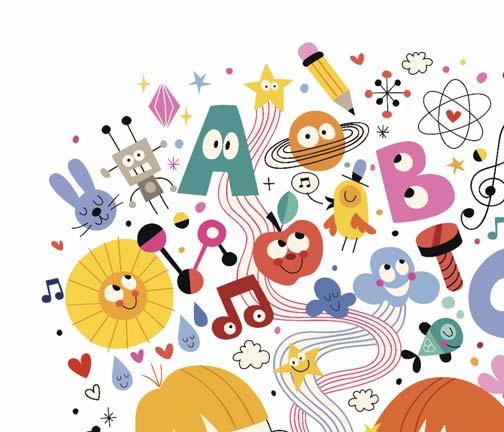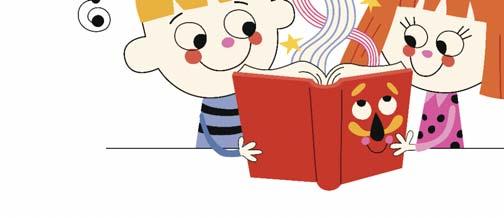
2 minute read
With Just Two Consonants and a Vowel
METHODS OF TEACHING the youngest students to read and write at Bialik have been transformed in recent months, thanks to new insights into how children can best learn to “decode” words and link sounds to letters and syllables.
Karen Lidor, Associate Director of General Studies, enthuses about the outcome of literacy training that was offered to JK to Grade 2 teachers in the summer and fall of 2022 through the Sounds-Write phonics-based program. “This has been extremely beneficial for our teachers because they now have a better understanding of how to precisely support individual students in their classrooms,” says Karen.
Sounds-Write is described as “a very highly structured, multi-sensory, incremental and code-oriented instructional approach to teaching children to read and spell.”
Through this training, according to Karen, Bialik faculty learned “to teach explicit skills that allow students to examine individual sounds, spelling patterns and syllables. Our staff are also being more intentional about the order in which students learn these skills so that they are constantly building on prior knowledge.”
Teachers have learned how best to prepare students to acquire the fundamental skills of independent and fluent readers. “No matter where a student is in their learning, the teacher will be able to make the learning tailored and impactful for each child,” says Karen.

Kali Singer, Viewmount Branch SK teacher, praised the Sounds-Write professional development she and other Bialik teachers received and the subsequent positive classroom outcomes. “The training covered everything from the very basics to much more advanced skills, such as teaching polysyllabic words.”
Results are already evident in the classroom. “As soon as students can sound out two consonants and a vowel, they can start blending the sounds to ‘decode’ words,” Karen points out. “Our students are no longer guessing at words. They are not relying on illustrations to determine a word. They are applying their phonics skills to blend sounds together to form words.”
Kali adds: “This teaching method has eliminated guessing in reading, given students more confidence, and has enabled teachers to determine and eliminate problems early on through ongoing assessment.”
Karen notes: “Proper spelling can develop much earlier than we once thought. If children learn phonics rules, they can apply this knowledge to both reading and writing simultaneously. With this understanding and instructional approach, we have already seen considerable improvement in spelling in our primary grades.”
Bialik plans to extend opportunities for this professional development to teachers in higher grades so they can also offer instruction and learning opportunities that reflect more complex language structures.
A new literacy-focused role at Bialik — added in the 2021-22 school year — is the dedicated reading specialist, who works one-on-one and in small groups with children in Grades 2 and up. Says Karen: “The reading specialist works to identify where a breakdown in learning has taken place and then provides intensive support to help that student meet learning expectations.”
Literacy is shining brighter than ever at Bialik, thanks to these new initiatives.









